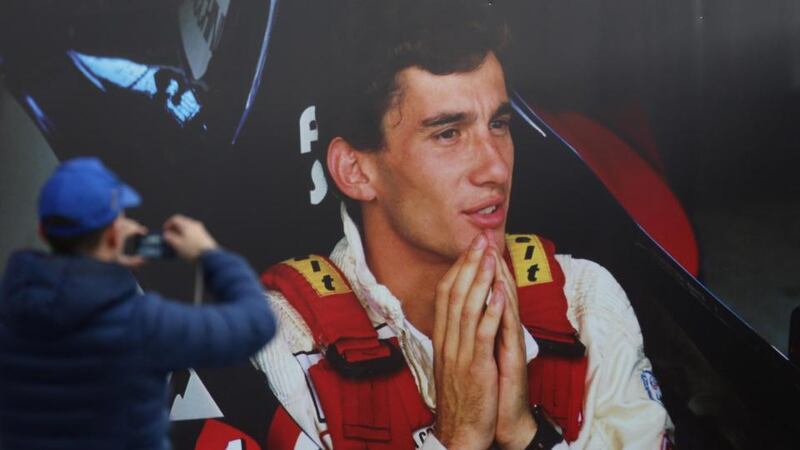Thirty years have passed since Ayrton Senna’s untimely death at the San Marino Grand Prix on May 1st, 1994, but the fascination with the mercurial Brazilian driver remains almost as mesmerising as ever it was on the track. His death, at 34, was bitter in prematurely ending a compelling career and a tragedy that deprived Formula One of one of its most captivating characters. His legacy remains, felt keenly across the sport and beyond.
Senna was driving for Williams at Imola. He had already won three titles and was recognised as the pre-eminent talent of a generation with no shortage of great drivers before what proved to be one of the most calamitous weekends in F1 history. During the first qualifying session on the Friday, his fellow Brazilian Rubens Barrichello suffered a huge crash that left him unconscious. Then in qualifying on Saturday the Austrian Roland Ratzenberger was killed when he crashed at Villeneuve.
The race went on regardless and on lap seven Senna went off at Tamburello, striking the wall at 233km/h. He was taken to hospital but was pronounced dead shortly afterwards. The shock echoed across the sport.
Britain’s Johnny Herbert was competing for Lotus that day and had known and raced Senna for some time, the pair having first competed in karts. “His skill set was very rare,” he says. “He had that ability to do it in qualifying, to do it in a race, in the wet or dry and this uncanny ability to get the very best out of the equipment he had, good or bad.
‘A good and decent man’: Tributes paid to Pope Francis
New teachers will be fast-tracked into permanent posts to tackle staffing ‘crisis’
‘Something needs to be done’: Jogger injured by e-bike feels ‘let down’ over Garda failure to prosecute
Decking, doughnuts and jogging: 25 fads that have been big in Ireland
“That made him very very special and that’s why we are still talking about it today, which is unbelievable.”
Much has been made of how Senna applied this talent, that alongside the extraordinary skill he was dangerously uncompromising, arguments over which still rage, but he was without doubt a singular and driven man.
Sid Watkins was F1′s doctor who attended to him in 1994. He wrote that after Ratzenberger’s death he asked a distressed Senna why he felt the need to go on, that he had nothing left to prove. “Give it up and let’s go fishing,” Watkins told him. Senna’s response summed up his character and why, as it was manifested in his driving, he was so enthralling. “Sid, there are certain things over which we have no control,” he replied. “I cannot quit, I have to go on.”
This focus and determination gave him on occasion almost ethereal command of a car. He had a compulsion to prove himself, not just to win but to demonstrate the plane on which he was operating. “He was always intense in his focus on his driving,” says Herbert.
“He had his aggressive side in the car but I don’t agree with people who say he was over-aggressive, he just drove very, very hard. As he said: ‘If there is a gap I am going to go for it’. He had that aura just by people seeing the helmet in their mirrors. That’s what he created.”
Senna is also a driver known beyond the motor racing bubble, as close as there is to a global household name from the era and was also all too human. He was a passionate supporter of driver safety, a thoughtful, caring and compassionate man, the first to stop and go to a driver’s aid after a crash, recalls Herbert.

Some of these attributes have endured beyond his death. In F1 the single biggest effect of that dreadful weekend was a renewed effort to improve safety. In the decade that followed the changes were wide-reaching and effective. Only one driver has died as a result of an crash on track during an F1 race since 1994, when Jules Bianchi struck a recovery vehicle at the Japanese GP in 2014.
There was also the establishment of the Instituto Ayrton Senna, a charitable foundation he had discussed forming with his sister Vivianne just before leaving for Imola. It was to formalise the large sums of money he was already quietly donating to help poor Brazilian children in education. Vivianne is its president today and it continues to spend ten of millions of pounds helping disadvantaged youngsters in Brazil.
Finally, there are the drivers past and future for whom Senna will always remain an inspiration. Lewis Hamilton is one of many of the generation that followed Senna who revere him to this day, while Michael Schumacher was reduced to tears during a press conference at Monza in 2000 on being reminded his win had equalled Senna’s tally of 41 victories. His presence is felt in modern drivers such as Charles Leclerc, who acknowledges him as a hero.
Gone but never forgotten then, a driver as admired as ever 30 years on from one of F1′s darkest days. “I am so pleased that when people watch footage of Ayrton they still have a sense that this guy was special, that they feel a bond with Ayrton even today,” says Herbert. “It’s lovely that we still think of Ayrton in a very positive way, to know that that Monaco qualifying lap – the Ayrton lap – still wows people.” – Guardian
- Sign up for push alerts and have the best news, analysis and comment delivered directly to your phone
- Find The Irish Times on WhatsApp and stay up to date
- Listen to our Inside Politics podcast for the best political chat and analysis













